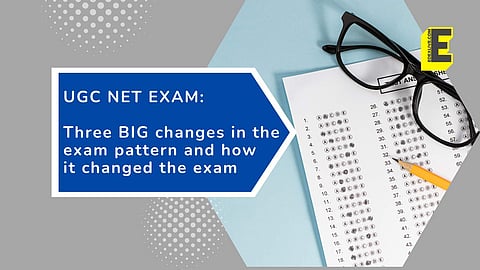

Over the years, the UGC-NET (University Grants Commission - National Eligibility Test) exam pattern has undergone significant transformations, reflecting the evolving needs and requirements of the educational landscape. These changes have been implemented to enhance the efficiency, fairness, and relevance of the examination process.
Let's delve deeper into the timeline of a few major exam pattern changes in UGC-NET:
- 2012: A major shift occurred as the exam transitioned from a subjective format to a completely objective one. The commission decided to conduct all three papers of the exam in multiple-choice format, with two different sessions on the same day. The syllabus, however, remained unchanged.
- 2018: This year brought substantial modifications to the UGC-NET exam pattern. Firstly, the number of papers was reduced from three to two, consolidating the test structure and making it more concise. Additionally, the age limit for Junior Research Fellowship (JRF) was extended from 28 to 30 years, and the duration of the exam was significantly reduced from the earlier six-hour marathon to a three-hour session.
- 2019: Another notable change was implemented, eliminating the gap between the two papers. Previously, candidates had to appear for multiple sessions with breaks in between. However, the revised exam pattern transformed it into a continuous three-hour examination. British logic was also introduced in Paper One, along with various topics on environmental science.
